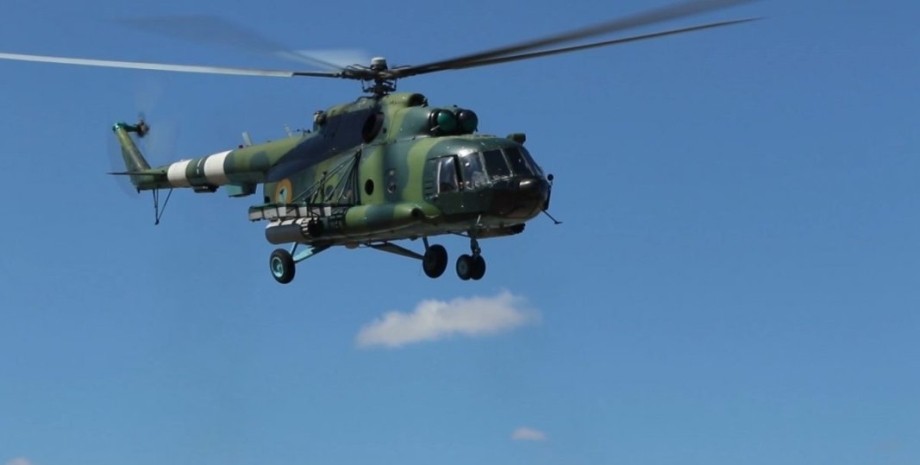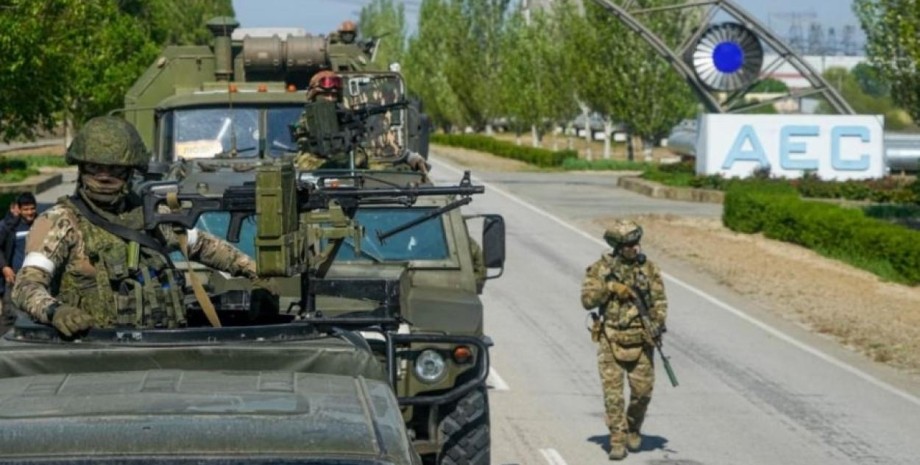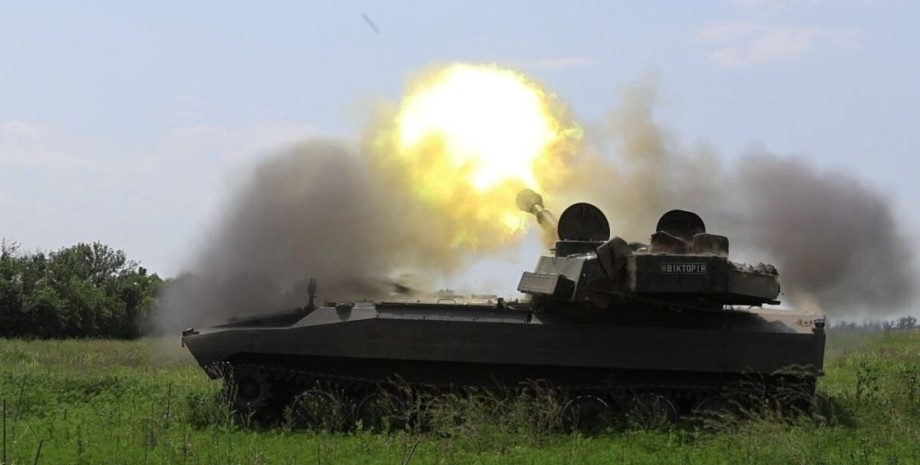
 By Eliza Popova
By Eliza Popova
How serious is the recruitment crisis? Last financial year, the army did not reach its purpose for a recruitment of 15,000 servicemen, which is 25% of the planned. This shortage forced the army to reduce the planned number of personnel from 476 thousand to 466 thousand people. And the current financial year will probably be worse. According to army officials, by September, the number of personnel will decrease by 20 thousand soldiers - up to 445 thousand.
This means that the country's main land forces can be reduced by 7% in only two years - when there are more and more tasks in Europe and even in the Pacific, and the army provides many critical means of war on war, the theater Without which other agencies are incapable of functioning. Focus has translated the new text of David Barno and Nora Benshal, dedicated to the reform of the recruitment system in the US Army.
Last year, other military agencies barely reached their goals for recruiting to the ranks of the current army, but in 2023 it will be more difficult for them to do so. At the end of the last financial year, they all accelerated the recruitment of candidates for deferred conscription, which will result in a much smaller reserve this year.
The Marine Corps may be able to compensate for this problem, since the outstanding personnel maintenance indicators have been allowed to reduce the target set last year. This may work this year. But the Navy and the Air Force face more serious obstacles when setting. Both, faced with the lack of candidates for deferred conscription, offered large financial bonuses and took a number of other disposable measures - for example, the Navy increased the maximum call from 39 to 41 years.
In addition, the Navy and Air Force recruiters took advantage of the release of the movie "Top Gun: Maverick", which, like his predecessor in 1986, became the most casual movie of the year. A recent analysis showed that the movie Top Gun has increased by 8%. To the extent that the sequel helped to increase the call to the Navy and the Air Force in 2022, in 2023, the shortage of their conscripts may be even deeper.
For example, the Air Force has just been announced that they would most likely not be able to achieve goals for a set in all three of their branches. Why is it going on now? In part, it is undoubtedly the fact that the end of the war in Afghanistan makes the service in the army less attractive. For the first time in almost 20 years, US troops have no longer fighting abroad, holding back rebels and terrorists.
Unemployment is low, which always complicates the recruitment process, and a tense labor market forces many companies to raise wages and offer attractive incentives to attract the best personnel. However, due to the complex interaction of the other two factors, it is almost impossible to determine which one has the greatest influence.
First, the number of young people who are entitled to serve in the army decreased sharply last year due to the consequences of the Covid-19 pandemic-with an already low 29% of the shocking 23%. The level of depression, anxiety and other mental disorders has increased sharply among young (and not very young) Americans who have encountered extreme levels of social isolation over time.
The closure of schools and distance learning has led to a sharp decrease in test results throughout the country (and in the world), and the results of ASVAB, a standardized military test for potential recruits, decreased by 9%. Due to the closure of schools, recruiters have also become very difficult to meet young people and make personal contact, which is very important for their work.
And the level of obesity among young people, who has long been one of the most serious reasons for the unfit for service in the army, increased from 19% to 22% during the pandemic. Many of these statistical indicators will recover shortly, and some may never return to the level that existed to the pandemic. Although reducing the fitness bar is extremely important, as we discuss below, it cannot solve the crisis of conscription.
The second and much more complex factor related to military service is the number of young people interested in service in the army. On the pandemic, only 13% of young Americans said they were considering the possibility of service in the army, and last year this and so the small figure decreased to only 9%. This amount is simply not enough to ensure a stable influx of recruits, which all volunteer forces rest on.
The results of the two surveys help to explain why the attractiveness of the army is declining. First, the number of Americans who have been trusting the US Armed Forces has fallen sharply over the last few years. For clarity, the trust of Americans has declined to almost all major US institutions, and Gallup data show that in 2022 it reached a record low average - only 27%.
Compared to this depressing statistics, the fact that 64 respondents have expressed confidence in the army last year is a really strong confirmation. However, in 2020, this figure was 72%, and in 2021 - 69%, which means falling by 8 percentage points in only two years. Even more anxious, the Reagan's national defense survey found an even sharper decline: trust in the US Armed Forces fell from 70% in 2018 to only 45% in 2021 (and rose to 48% in 2022).
Secondly, there are some of the first signs that fewer people in the army are ready to recommend military service to other young people. In 2019, almost 75% of the families of servicemen said they would recommend military service to someone of their loved ones. However, in 2021, this figure decreased just less than 63% - another sharp decline in just two years.
Since 80% of young people who come to military service today have a family member who serves in the army, and 25-30%-a military serviceman, it is possible that more and more military families are sending their children to civilian cars '' Jerica. It is difficult to evaluate the exact causes of such a rapid decrease in the number of servicemen, because here, as in the case of the right to military service, there are many different trends.
The chaotic withdrawal of US troops from Afghanistan has almost certainly become one of the reasons, since most Americans do not approve of how Biden administration has carried out the withdrawal of troops (including many who generally supported the decision to withdraw troops).
Another reason is the widespread opinion that US military leaders are too involved in politics, partly because of a number of contradictions around the chairman of the Joint Committee of the Chiefs of Staff of General Mark Millie. And the level of growth of sexual encroachment in the army on hearing after the tragic disappearance and death of a specialist Vanessa Gillen in 2020 and a subsequent disciplinary punishment of 14 army officials in Fort Huda.
In fact, during a survey conducted in the fall of 2021, 30% of Americans aged 16 to 24 stated that the possibility of sexual harassment or attacks is one of the main reasons why they would not like to join the US Armed Forces. (Guilien's case also forced Congress to approve the large -scale reforms of the military justice system last year, which can eventually help to relieve such fears).
Moreover, supporters of both political parties publicly emphasize the various problems facing the army and weigh their followers (and children of their followers) from the military service. Democrats, for example, publicly express anxiety with a small but significant problem of extremists in the army.
Many Democrats, especially Senator Kirsten Gillibrand, also have long criticized the imaginary inability of the army to make significant progress in solving problems with sexual harassment and attacks - and continue to do so if the above -mentioned judicial reforms are insufficient. Republicans, on the contrary, diminish the importance of the problem of extremism and instead focus on the so -called "Livatny disease" in the army.
Despite the fact that Millie's chairman, leaders of all services and external experts strongly rejected similar statements, some republican members of Congress continue to promote this version, even blaming the military of the use of "selective data" that hide these problems.
For example, in November, senator's offices Marko Rubio and Chip Roy representative published a report called Woke Warfighters, which accuses Biden's administration of weakening military power by promoting critical racial theory, maintaining gender change procedures and encouraging LGBTK.
In a recent survey, almost half of the Republicans agreed with the statement that "Livalian practice that undermines the efficiency of the army" is one of the reasons for reducing their trust in the US Armed Forces. Now that the Republicans have returned control of the House of Representatives, they plan to deal with these problems hard, focusing on the fact that Jim Jordan's representative called "the deprivation of all" left "in our army.
" Solving these complex and multifaceted problems will not be simple or fast. There are no magical boards that will suddenly make more young people suitable for service or easily change the skeptical attitude of young people to the army. Increasing the tendency to service will require long -term efforts that will allow to overcome the gap between the American people and their army, which is constantly increasing.
And although all agencies are taking different measures to solve these problems, much more need to be done to ensure not only preparation, but also stable reproduction of all volunteer forces. Here are some actions that military agencies and the whole country in general have to do now to turn these trends back. One of the most successful initiatives to improve the preparation of conscripts was the army program called "Preparatory Course of the Future Soldier".
This initiative provides academic and physical training of future recruits who do not have sufficient skills in one or both areas, but in another suitable for service. Last year, more than 92% of participants (nearly 3,000 soldiers) successfully passed the basic training, which forced the army to significantly expand this program in 2023.
Previous data indicate that graduates of this course are selected to management positions during basic training more often than ordinary recruits, although it is too early to say whether it will be a dominant trend over time. The obvious success of this innovative approach implies that similar programs should be adopted by other agencies to help solve the problem of conscripts.
In the near future, this may help overcome some problems related to reducing success and physical training caused by pandemic. Subsequently, there will be a unique opportunity to cover a wider range of potential servicemen who have completed completely different and often unequal educational institutions. These programs will bring direct benefits and recruiters who spend a lot of time and energy to help potential recruits meet the standards of physical training.
The centralization of such efforts is not only much more efficient, but also allows recruiters to focus on their main mission: to establish contact with a large number of young people and to encourage them to consider military service. The US Armed Forces are not allowed to service to the current military service of an unmarried boy or woman who have a dependent - usually, although not always, a child.
Oddly enough, this prohibition is removed after the initial preparation is completed, usually after a few months. Anyone who has a dependent after this time can continue the service-and, according to the latest data, almost 4% of servicemen who are serving are single parents.
Complete deprivation of single parents of the right to join military service (or promotion of expensive legal acrobatics for the right) does not make sense in the world in which we live today and is not a reasonable rule on single servicemen. In fact, cadets of the Armed Forces Academies are now allowed to continue their studies, if they become parents, provided that they will grant the right of temporary care to someone else.
The same rule applies to all single parents-military personnel and families from two military who must have an approved family care plan that defines a temporary guardian when they go for operations or unexpectedly excommunicate. It has long been time to extend similar rules to anyone who wants to enter military service - from officers to ordinary. The problem of mental health of young people has been raising a long time ago, and this trend has increased significantly during the pandemic.
However, many people with depression, anxiety and other disorders can be effectively treated with ordinary drugs. For example, according to the American Psychiatric Association, 55-65% of children and adolescents with a diagnosis respond well to the initial treatment with antidepressants. The US military has long allowed people in the form of continuing service, taking such medicines, but they continue to prohibit people who take these medicines to join the Armed Forces unclear.
The US Army should not deny qualified candidates in the service on the basis of outdated stereotypes for the treatment of mental illness. And frankly, it can no longer afford it when such treatments are becoming more common among all segments of the US population.
Instead of automatic refusal, potential conscripts should be allowed to serve if they can submit a letter from their doctor containing the following three questions: if the answer to the first question is "no" and the forecast is evaluated as good or favorable, the applicant should be automatically allowed to enter to the service.
If the answer to the first question "yes" but the second question defines the problem as a limited degree or duration, the applicant should be allowed to reserve and take a course of study after receiving a letter in which the answer to the first question will be "no".
The abolition of a complete ban on the use of marijuana in the past while continuing drug testing in the process of recruitment and after the attitude of society to the use of marijuana has changed significantly over the last decade. Today, recreational marijuana is legalized in 21 states, Washington and Guami - which is more than 47% of Americans aged 15 to 24 years.
This means that almost half of the target group of volunteers lives in places where this drug is legal by the laws of the state, and many young people may not understand or not care that it remains illegal under federal law. The US armed forces have long been proud of them relatively free from drugs, and they should remain such, but it makes no sense to automatically cut the corresponding conscripts because they have used marijuana in the past.
In fact, studies have shown that recruits who received administrative punishment for marijuana in the past showed the same high results as other soldiers. It is much wiser not to pay attention to the slight use of marijuana in the past and instead focus on strict testing on drugs in the process of applying for a call, during training and on a regular basis in all units. The movement for an army without drugs should begin in the process of conscription, not in adolescence.
Despite the fact that almost all of the volunteer forces have achieved great success, they have one huge "Achilles' heel": the gap between the US Armed Forces and the nation they serve is constantly increasing. As noted above, young people who are most likely to replenish the US Armed Forces are those who are familiar with them, since a relative, especially their father, is already serving.
But this reserve is too small to support the armed forces in the long run, and Americans across the country deserve to see and touch the wonderful military who pay their taxes. Most Americans are deeply ignorant of the US Armed Forces, so expanding their personal relationships with people in the form is an important first step to increasing the tendency. To do this, the US military will have to work actively with the population, which they just did not do.
For example, the army recently launched a program within which combat divisions are united with recruiters in a number of major cities in the country to help more Americans meet with people in shape and see opportunities and units. Most other agencies could find their own ways to take such activities, whether it is an air show, or weeks of fleet that show both people and equipment.
Крім того, відомствам слід розширити свої програми допомоги рекрутерам, спрямовуючи успішних молодих військовослужбовців назад до рідного міста для спілкування із призовниками та допомоги своїм друзям і одноліткам у ознайомленні з життям в армії.
Відомства мають надати додаткові стимули для участі у цих програмах, а також залучати більше військовослужбовців, які прослужили рік і більше, щоб вони могли поділитися своїм досвідом.
Командири підрозділів усіх рівнів також повинні заохочувати своїх підлеглих до участі в інформаційно-пропагандистських заходах у місцевих середніх школах та організаціях, коли вони повернуться додому.
Ми рішуче підтримуємо рекомендацію Національної комісії з військової, національної та державної служби 2020 року щодо розширення програми підготовки молодших офіцерів запасу (JROTC).
Ця програма, що пропонується в середніх школах по всій країні, забезпечує навчання лідерству та громадянськості понад пів мільйона старшокласників щороку та знайомить їх із збройними силами США, не зобов'язуючи вступати до їхніх лав.
Зрозуміло, шкільна адміністрація в жодному разі не повинна примушувати учнів до участі у програмі підготовки молодших офіцерів запасу, і Міністерство оборони наголошує, що це порушує правила програми.
Однак програма підготовки молодших офіцерів запасу має низку помітних переваг, включаючи можливості для розвитку лідерських якостей, самодисципліни та характеру, і, як буде сказано нижче, вона допомагає багатьом молодим американцям отримати деяке уявлення про збройні сили США.
Проте, як показало одне дослідження, програму підготовки молодших офіцерів запасу непропорційно зосереджено на півдні країни та недостатньо представлено майже у двох третинах штатів США.
Трохи менше 16% американської молоді проживає у шести штатах (плюс округ Колумбія), де понад 40% державних середніх шкіл мають програму підготовки молодших офіцерів запасу, тоді як понад 52% американської молоді проживає у 28 штатах, де лише 10% або менше Державні середні школи пропонують цю програму.
Конгрес повинен виділити кошти, необхідні для розширення програми Корпусу підготовки молодших офіцерів резерву в цих штатах, де спостерігається серйозний дефіцит, щоб допомогти прищепити схильність до державної служби учням, які вирішили взяти участь у програмі, і розширити знайомство зі збройними силами США серед усіх учнів.
Крім того, Міністерство оборони, можливо, у партнерстві з Міністерством освіти чи департаментами освіти штатів, має розглянути можливість використання програми підготовки молодших офіцерів запасу, щоб запропонувати базові курси з цивільного виховання всім зацікавленим учням.
Громадянська освіта та знання у Сполучених Штатах неухильно погіршуються з часом.
Недавнє опитування дорослого населення США показало, що менше половини респондентів можуть назвати три гілки влади, а чверть не може назвати жодної гілки влади, у той час як тільки 19% американців, що народилися у віці до 45 років, можуть скласти тест із громадянознавства, який мають пройти натуралізовані громадяни.
Скромне розширення штату програми підготовки молодших офіцерів запасу для проведення таких занять з громадянства могло б стати величезним суспільним благом, а допомога молодим американцям в отриманні хоча б базового розуміння того, як працює уряд США, напевно також підвищить їхню готовність розглянути питання про вступ до армії чи про служіння суспільству будь-яким іншим способом.
Усі служби повинні вкладати набагато більше часу, енергії та грошей у зусилля, спрямовані на залучення кваліфікованих жінок, оскільки все більше жінок отримують освіту та навички, необхідні для служби в армії.
Хоча жінки становлять трохи менше половини населення віком від 15 до 24 років, щороку вони отримують більше дипломів про середню освіту, ніж їхні однолітки-чоловіки (89,4% проти 84,2%). Більше жінок відвідує коледж та здобуває вищу освіту.
Крім того, молоді жінки краще фізично підготовлені, ніж будь-коли раніше. За даними NCAA, наприклад, дівчатка та жінки складають 43% спортсменів старших класів, 47% спортсменів коледжів першого дивізіону та понад 40% спортсменів другого та третього дивізіонів.
Проте, жінки, як і раніше, становлять лише 17% чинних військовослужбовців — і вони практично не представлені в армії та морській піхоті, становлячи 15,5% та 9,1% відповідно. Ми не очікуємо, що ці цифри досягнуть ґендерного паритету 50:50, і не рекомендуємо службам прагнути цього.
Але цілеспрямовані зусилля щодо підвищення схильності до служби та призову на військову службу серед найбільш кваліфікованих молодих жінок — це розумне вкладення коштів, особливо якщо врахувати, що багато хто з них ніколи не думав про службу в армії.
Звичайно, цілком реальні проблеми із сексуальними домаганнями та нападами, описані раніше, відлякують все більше жінок від служби в армії.
Наприклад, недавнє опитування молоді, проведене Міністерством оборони, показало, що 30% опитаних заявили, що можливість сексуальних домагань чи нападів є однією з основних причин, через які вони не розглядають можливість служби в армії.
Відомства та їх рекрутери мають чітко та прозоро надавати дані з цих питань. Тим самим вони викличуть довіру до себе, оскільки деякі жінки можуть переоцінювати масштаби проблеми, а також назвуть конкретні дії, які вони роблять для вирішення цих проблем.
Пентагон також заслуговує на похвалу за те, що після рішення у справі Доббс швидко виробив чітку політику, яка підтверджує, що репродуктивне здоров'я військовослужбовців залишається пріоритетом, а зовсім недавно ввів у дію політику, яка не вимагає від жінок розкривати причини для заяви про адміністративну відпустку.
Ця політика має допомогти зменшити побоювання, які виникають у деяких молодих жінок у зв'язку з призначенням на бази в штатах із новими обмежувальними законами щодо абортів, що могло б ще більше знизити їхню схильність до служби.
Члени Конгресу з обох сторін публічно критикують збройні сили США, щоб залучити своїх прихильників, у результаті шкодячи тому самому інституту, про який вони так глибоко переймаються.
Зображуючи всіх військовослужбовців США як ліваків чи екстремістів, політики підривають громадську підтримку цього інституту та людей у формі, відволікаючи увагу від вивчення конкретних проблем, що впливають на військовий потенціал та боєздатність.
Виборні посадові особи повинні припинити робити узагальнюючі твердження про всі збройні сили і натомість зосередити свою законну наглядову роль на старших посадових особах армії, підзвітним Конгресу.
Цих чиновників можна запитати в приватному порядку про їхні особисті погляди на питання щодо недоторканності військовослужбовців, сексуальне насильство та інші публічно обговорювані теми, що може спонукати до більш відвертих бесід, які дозволять обом сторонам відмовитися від заїжджених тез та від уваги ЗМІ.
Слухання мають бути зосереджені на конкретних фактичних питаннях, які впливають на боєздатність збройних сил США, а не надавати майданчик для непотрібного самозакоханого позування будь-якої із сторін.
Військові ветерани у Конгресі потенційно можуть відіграти тут значну роль.
Як члени Конгресу, які особисто носили військову форму, вони мають бути взірцем відповідального підходу до забезпечення громадського контролю, не вдаючись до глибоко суперечливих нападів на відомства загалом чи їх окремих членів.
Протягом 50 років збройні сили США покладалися на безперервний потік добровольців, які поповнювали їхні лави у мирний та воєнний час.
Однак більшість тенденцій, що породили нинішню кризу призову, не зміниться найближчим часом, і якщо не вжити заходів, вони невдовзі поставлять під загрозу здатність усіх добровольчих сил захищати націю.
Повернення до призову небажане і політично нежиттєздатне, оскільки, як ми часто любимо жартувати, єдині групи в Америці, які виступають проти призову, — це демократи, республіканці та незалежні.
Таким чином, без вживання термінових заходів щодо підвищення придатності та схильності до заклику, збройні сили продовжать скорочуватися з абсолютно нестратегічних причин і незабаром стануть надто малі для вирішення проблем безпеки, що стоять перед Сполученими Штатами в перспективі найближчих кількох років і далі.
Безліч взаємопов'язаних причин кризи призову не піддаються швидкому усуненню, і жодна з них, швидше за все, не зникне сама по собі, навіть якщо рівень безробіття знову зросте.
Відомства, військовослужбовці та ветерани, а також широке співтовариство національної безпеки — всі мають творчо підійти до пошуку шляхів розширення прав та підвищення привабливості служби без шкоди для сили та професіоналізму збройних сил.
Ми сподіваємося, що ці рекомендації стануть корисною відправною точкою для важливої національної дискусії та допоможуть стимулювати широкі зусилля щодо розробки інноваційних рішень цих складних проблем. Про автора Девід В.
Барно, генерал-лейтенант ЗС США (у відставці), і доктор Нора Бенсахель є запрошеними професорами стратегічних досліджень у Школі перспективних міжнародних досліджень Джона Хопкінса та старшими науковими співробітниками Центру стратегічних досліджень Філіпа Меррілла.




















Všetky práva vyhradené IN-Ukraine.info - 2022